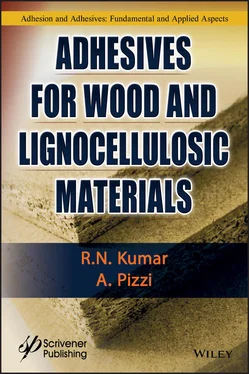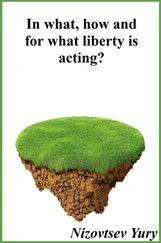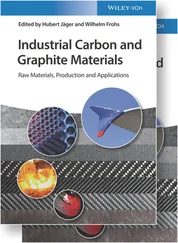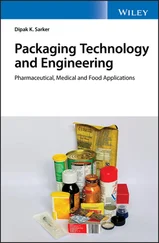247 239
248 240
249 241
250 242
251 243
252 244
253 245
254 246
255 247
256 248
257 249
258 250
259 251
260 252
261 253
262 254
263 255
264 256
265 257
266 258
267 259
268 260
269 261
270 262
271 263
272 264
273 265
274 266
275 267
276 268
277 269
278 270
279 271
280 272
281 273
282 274
283 275
284 276
285 277
286 278
287 279
288 280
289 281
290 282
291 283
292 284
293 285
294 286
295 287
296 288
297 289
298 290
299 291
300 292
301 293
302 294
303 295
304 296
305 297
306 298
307 299
308 300
309 301
310 302
311 303
312 304
313 305
314 306
315 307
316 308
317 309
318 310
319 311
320 312
321 313
322 314
323 315
324 316
325 317
326 318
327 319
328 320
329 321
330 322
331 323
332 324
333 325
334 326
335 327
336 328
337 329
338 330
339 331
340 332
341 333
342 334
343 335
344 336
345 337
346 338
347 339
348 340
349 341
350 342
351 343
352 344
353 345
354 346
355 347
356 348
357 349
358 350
359 351
360 352
361 353
362 354
363 355
364 356
365 357
366 358
367 359
368 360
369 361
370 362
371 363
372 364
373 365
374 366
375 367
376 368
377 369
378 370
379 371
380 372
381 373
382 374
383 375
384 376
385 377
386 378
387 379
388 380
389 381
390 382
391 383
392 384
393 385
394 386
395 387
396 388
397 389
398 390
399 391
400 392
401 393
402 394
403 395
404 396
405 397
406 398
407 399
408 400
409 401
410 402
411 403
412 404
413 405
414 406
415 407
416 408
417 409
418 410
419 411
420 412
421 413
422 414
423 415
424 416
425 417
426 418
427 419
428 420
429 421
430 422
431 423
432 424
433 425
434 426
435 427
436 428
437 429
438 430
439 431
440 432
441 433
442 434
443 435
444 436
445 437
446 438
447 439
448 440
449 441
450 442
451 443
452 444
453 445
454 446
455 447
456 448
457 449
458 450
459 451
460 452
461 453
462 454
463 455
464 456
465 457
466 458
467 459
468 460
469 461
470 462
471 463
472 464
473 465
474 466
475 467
476 468
477 469
478 470
479 471
480 472
481 473
482 474
483 475
484 476
485 477
486 478
487 479
488 480
489 481
490 482
491 483
492 484
493 485
494 486
495 487
496 488
497 489
498 490
499 491
500 492
501 493
Scrivener Publishing100 Cummings Center, Suite 541J Beverly, MA 01915-6106
Adhesion and Adhesives: Fundamental and Applied Aspects
The topics to be covered include, but not limited to, basic and theoretical aspects of adhesion; modeling of adhesion phenomena; mechanisms of adhesion; surface and interfacial analysis and characterization; unraveling of events at interfaces; characterization of interphases; adhesion of thin films and coatings; adhesion aspects in reinforced composites; formation, characterization and durability of adhesive joints; surface preparation methods; polymer surface modification; biological adhesion; particle adhesion; adhesion of metallized plastics; adhesion of diamond-like films; adhesion promoters; contact angle, wettability and adhesion; superhydrophobicity and superhydrophilicity. With regards to adhesives, the Series will include, but not limited to, green adhesives; novel and high-performance adhesives; and medical adhesive applications.
Series Editor:Dr. K.L. Mittal P.O. Box 1280, Hopewell Junction, NY 12533, USA Email: usharmittal@gmail.com
Publishers at Scrivener Martin Scrivener ( martin@scrivenerpublishing.com) Phillip Carmical ( pcarmical@scrivenerpublishing.com)
Adhesives for Wood and Lignocellulosic Materials
R. N. Kumar
and
A Pizzi

This edition first published 2019 by John Wiley & Sons, Inc., 111 River Street, Hoboken, NJ 07030, USA and Scrivener Publishing LLC, 100 Cummings Center, Suite 541J, Beverly, MA 01915, USA © 2019 Scrivener Publishing LLC For more information about Scrivener publications please visit www.scrivenerpublishing.com.
All rights reserved. No part of this publication may be reproduced, stored in a retrieval system, or transmitted, in any form or by any means, electronic, mechanical, photocopying, recording, or otherwise, except as permitted by law. Advice on how to obtain permission to reuse material from this title is available at http://www.wiley.com/go/permissions.
Wiley Global Headquarters111 River Street, Hoboken, NJ 07030, USA
For details of our global editorial offices, customer services, and more information about Wiley products visit us at www.wiley.com.
Limit of Liability/Disclaimer of WarrantyWhile the publisher and authors have used their best efforts in preparing this work, they make no representations or warranties with respect to the accuracy or completeness of the contents of this work and specifically disclaim all warranties, including without limitation any implied warranties of merchantability or fitness for a particular purpose. No warranty may be created or extended by sales representatives, written sales materials, or promotional statements for this work. The fact that an organization, website, or product is referred to in this work as a citation and/or potential source of further information does not mean that the publisher and authors endorse the information or services the organization, website, or product may provide or recommendations it may make. This work is sold with the understanding that the publisher is not engaged in rendering professional services. The advice and strategies contained herein may not be suitable for your situation. You should consult with a specialist where appropriate. Neither the publisher nor authors shall be liable for any loss of profit or any other commercial damages, including but not limited to special, incidental, consequential, or other damages. Further, readers should be aware that websites listed in this work may have changed or disappeared between when this work was written and when it is read.
Library of Congress Cataloging-in-Publication Data
ISBN 978-1-119-60543-0
This book is dedicated to my (Dr. R. N. Kumar) son, the late Dr. Gopal Kumar who evinced keen interest in my endeavor to write the book.
The dramatic increase in the production of reconstituted wood products over the past 100 years has been made possible through the systematic development of new adhesives devised to meet the growing challenges of the times. Originally, large-diameter trees were available, but as their availability decreased, followed by a corresponding increase in price, the wood industry had to meet the challenge by attempting to use small-diameter trees and comminuted wood particles, fibers and pulp mill waste. This resulted in the development of reconstituted wood produced from the comminuted particles bound together with adhesives. This development had a significant impact on meeting challenges. The development of new types of adhesives—both synthetic petroleum-based adhesives as well as adhesives of natural origin—occurred during this period.
Читать дальше













